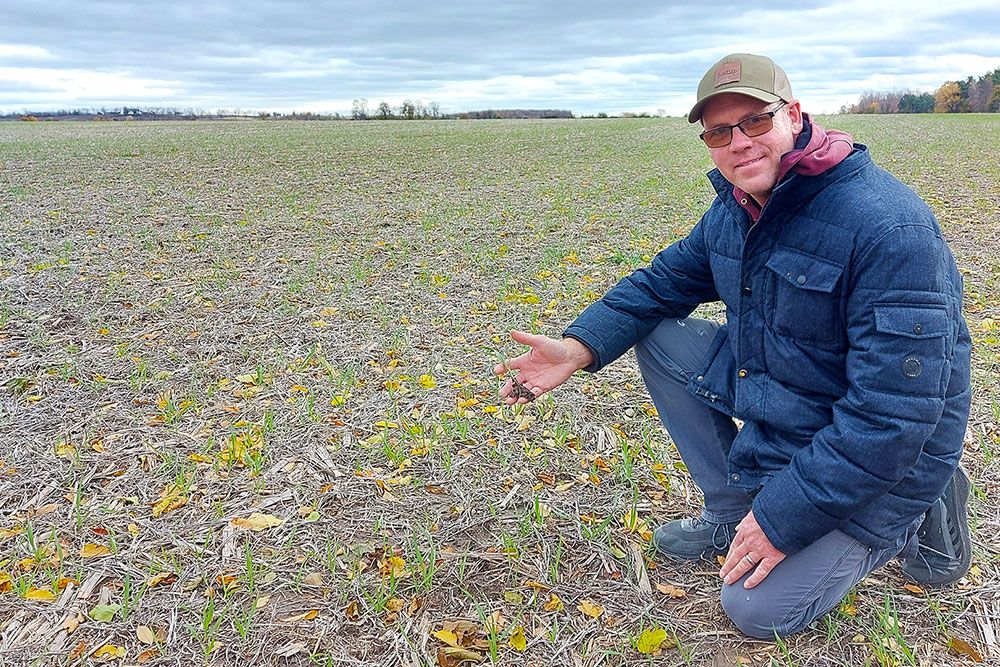Producer profile – Peter Nonkes

Full-cover farming: Meet a local grower who is planting cover crops on every acre
Green all year: Some producers are making sure soil isn’t left bare
When it comes to setting goals, farmers work to achieve high yields and produce high-quality crops to ensure their operation remains profitable. Yield is one measure of success. Soil health is another.
One agricultural producer from Huron County, Peter Nonkes, recently reached a milestone by planting cover crops on 100 per cent of his acres.
In this interview, with Ausable Bayfield Conservation’s Hope Brock, Peter shares why he uses cover crops and what he’s learned in his journey towards his land being fully covered.
Meet Peter Nonkes – Questions and answers with a farmer planting cover crops on every acre
Hope: When did you first start using cover crops and why?
Peter: It all started in 2011 when my father passed away, and I began farming full-time with my mother that fall. My uncles and I plowed most of the farm but, to be honest, we were all terrible at plowing. To help with that, we got a newer plow and used it for a couple of years. I did get better at plowing over time but, after doing the math, I realized it was costing me about $50 per acre to plow. Because of that, I decided to stop plowing and sold the plow.
After the winter wheat came off that year, I left the field until spring to plant again. The amount of weeds that grew in that time was amazing. I realized I needed to grow something—or else the weeds would.
Hope: What was your motivation for covering 100 per cent of your farm acres with cover crops?
Peter: I wanted to have a living root in the ground all year so it really just stemmed from that idea. Around 2015, I started planting red clover after wheat and cutting it to feed to my cows. A couple of years later, I added oats and peas to the red clover mix and I still do that to this day.
In the fall of 2020, I no-till drilled some cereal rye into my corn stalks and planted green into it in the spring. I didn’t notice any difference in planting or yields, so I’ve expanded that practice across all my corn acres now. More recently I was also looking for something to plant after my soybean stubble going into corn and I have landed on oats. I have since expanded it to more of my soybean acres. The rye and oats have been part of an on-going trial with the Huron County Soil and Crop Improvement Association.
Hope: What benefits have you noticed on your cover crop fields? At what point in your cover crop journey did you notice these?
Peter: One of the things I’ve noticed with the cereal rye is less fleabane, which I noticed the first year I planted it.
Hope: What’s been your biggest challenge and how did you overcome it?
Peter: Timing can be an issue with planting late-season cover crops but I’ve been trying drone seeding the last few years, which helps get the cover crop established a bit earlier than after harvest.
Hope: What advice do you have for those just starting their cover crop journey?
Peter: If you’re just starting out, my advice would be to start small, see what works on your farm, and expand from there.
Hope: Thanks, Peter, and congratulations on this amazing achievement!